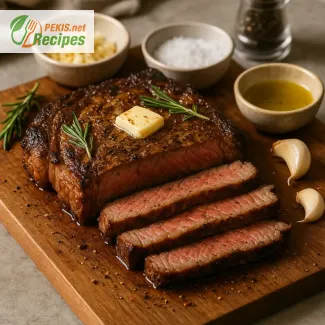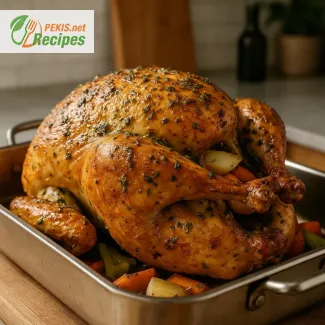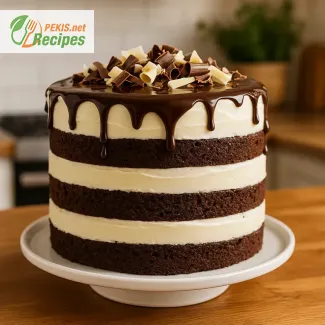
Mastering the Art of the Perfect Grilled Ribeye Steak
A juicy summer classic that celebrates flavor, fire, and simplicity
When it comes to grilling steak, few cuts can rival the ribeye. Known for its exceptional marbling, tender texture, and rich, beefy taste, the ribeye steak is a showstopper on any summer grill. Whether you're hosting a backyard barbecue or planning an intimate dinner on the patio, this grilled ribeye steak recipe is all about capturing that smoky, caramelized crust with a juicy, pink center that melts in your mouth.
Ribeye is a cut that begs for high heat and quick searing. The goal is to build a deep, golden-brown char while preserving the tenderness and succulence within. With the right preparation—seasoning, timing, and technique—this juicy grilled ribeye becomes more than a meal. It’s a celebration of simple ingredients elevated by fire.
Why ribeye steak is the ultimate grill cut
The ribeye is prized for its generous marbling, which renders during grilling, resulting in unmatched juiciness and flavor. Its combination of fat, texture, and depth makes it the ideal choice for grilled steak recipes that aim to impress. The key to success lies in choosing a bone-in or boneless ribeye that’s at least 1 to 1.5 inches thick—thinner cuts tend to overcook easily, while thicker ones offer that perfect medium-rare center.
Preparing the ribeye for grilling
A great grilled ribeye steak begins well before the meat hits the grill. Start by bringing the steak to room temperature and patting it dry to encourage a superior sear. A liberal coating of kosher salt, freshly ground black pepper, and a touch of garlic powder enhances the meat's natural richness. For those who love a touch of heat, a hint of smoked paprika adds both depth and color.
Letting the steak rest with seasoning for at least 30 minutes allows the flavors to penetrate and sets the foundation for a perfect crust. For even better results, some grill enthusiasts recommend a dry brine method overnight.
Choosing the right grill setup for best results
Whether using a gas grill, charcoal grill, or a cast iron skillet over open flame, temperature control is crucial. A two-zone grilling setup—with one side hot for searing and the other cooler for finishing—provides flexibility and prevents overcooking.
To create that signature crust, sear the ribeye over high heat for 2–3 minutes per side, then transfer it to indirect heat to finish cooking to your preferred doneness. Using a meat thermometer ensures accuracy: 52°C (125°F) for rare, 57°C (135°F) for medium-rare, and 63°C (145°F) for medium.
Resting and slicing: the final steps to perfection
After removing the steak from the grill, resist the urge to slice into it immediately. Resting the ribeye for 5–10 minutes is essential to let the juices redistribute, ensuring every bite is juicy and flavorful. Always slice against the grain for optimal tenderness, revealing a blushing pink center surrounded by a beautifully seared edge.
Serving ideas and pairings
A grilled ribeye steak pairs effortlessly with bold yet simple sides. Think grilled vegetables, garlic mashed potatoes, or a crisp arugula salad with lemon vinaigrette. For sauces, a pat of herbed butter, chimichurri, or balsamic glaze can add that extra flair without overpowering the meat.
Whether served at sunset with a glass of red wine or next to cold beer during a family cookout, this juicy ribeye steak delivers the ultimate summer grilling experience. It’s rustic, elegant, and unforgettable.
Step 1: Prepare the ribeye steak
Remove the steak from the refrigerator and let it rest at room temperature for at least 30 minutes. This ensures even cooking. Pat dry with paper towels to remove excess moisture.
Step 2: Season the steak
Brush the steak on both sides with olive oil. Mix salt, pepper, smoked paprika, garlic, and rosemary together and rub evenly over the steak. Let sit for 10 more minutes.
Step 3: Preheat the grill
Heat your grill (gas or charcoal) to high temperature. Create a two-zone cooking area: one hot zone for searing and one cooler zone for finishing.
Step 4: Sear the steak
Place the steak on the hot zone and sear for 2–3 minutes on each side without moving it. This develops a crisp, flavorful crust.
Step 5: Finish on indirect heat
Move the steak to the cooler zone and cook for an additional 4–6 minutes per side, depending on your desired doneness. Use a meat thermometer for accuracy:
- Rare: 52°C (125°F)
- Medium-rare: 57°C (135°F)
- Medium: 63°C (145°F)
Step 6: Add butter and rest
During the last 2 minutes of grilling, place a slice of butter on top of the steak. Once removed from the grill, let the steak rest on a cutting board, loosely covered with foil, for 10 minutes.
Step 7: Slice and serve
Cut the steak against the grain into thick slices. Serve with your choice of sides like grilled vegetables, mashed potatoes, or fresh salad.
Enhancing Your Grilled Ribeye Steak: Expert Tips for Maximum Flavor
Small changes that bring out the best in every bite
While a classic grilled ribeye steak stands proudly on its own, there are several ways to elevate the traditional recipe to new heights. From flavor-enhancing marinades to strategic resting times and upgraded ingredient choices, thoughtful tweaks can transform an already great steak into a showstopping experience. The essence lies in understanding how each element—seasoning, technique, and timing—contributes to the final taste, texture, and aroma.
Selecting the right cut for superior results
Though ribeye is already one of the most flavorful cuts of beef, not all ribeyes are created equal. Choosing a dry-aged ribeye adds complexity and nutty richness due to controlled moisture loss and enzymatic breakdown. For the highest juiciness, opt for a bone-in ribeye, which retains heat better and enhances flavor as the bone acts as a natural insulator during grilling.
Marbling is key. Look for a steak with consistent intramuscular fat—those white streaks throughout the meat. This fat melts during cooking, keeping the steak tender and infusing it with flavor. A steak with minimal marbling will likely result in a drier, less flavorful bite.
Marinades and rubs that go beyond salt and pepper
While salt and pepper are often enough for purists, adding a simple marinade or dry rub can introduce layers of flavor without overwhelming the meat. Consider marinating the steak for 30 minutes to 2 hours in a mix of soy sauce, Worcestershire sauce, balsamic vinegar, and rosemary. These ingredients not only tenderize the meat but enhance its umami character.
Alternatively, for a dry rub, incorporate smoked paprika, crushed coriander seeds, or brown sugar to achieve a sweet-and-savory crust. A small addition of coffee grounds or cocoa powder can deepen the flavor profile without being detectable on the palate.
Boosting depth with compound butters and finishing oils
One of the easiest upgrades is topping the cooked ribeye with a compound butter. Mix softened butter with garlic, parsley, thyme, lemon zest, or blue cheese, then chill and slice. As it melts over the hot steak, it creates a rich, aromatic finish that coats each bite.
For a more Mediterranean flair, drizzle with a finishing oil made from extra virgin olive oil, crushed anchovies, lemon juice, and capers. The balance of fat and acidity adds contrast and elevates the steak beyond the basic backyard barbecue flavor.
Common mistakes and how to avoid them
One of the most frequent errors is not letting the steak reach room temperature before grilling. This can lead to uneven cooking and a cold, raw center. Always allow the meat to sit out for 30–60 minutes, especially for thicker cuts.
Over-flipping is another issue. Constantly turning the steak prevents the development of a proper crust. Sear once per side, then move to indirect heat. Avoid pressing the steak with a spatula, as it squeezes out valuable juices and reduces tenderness.
Another pitfall is neglecting the rest period. Cutting too early allows moisture to escape instead of redistributing within the fibers. A 10-minute rest makes a noticeable difference in juiciness and overall mouthfeel.
Healthier variations without sacrificing flavor
For a lighter version of this recipe, trim excess visible fat before cooking and reduce the use of butter. Replace it with a light herb vinaigrette or lemon-parsley olive oil for a fresh finish.
Instead of pairing with heavy sides like mashed potatoes, opt for grilled vegetables, cauliflower mash, or a quinoa salad to keep the meal balanced while supporting the steak's bold flavors.
If you're looking to reduce sodium, experiment with salt substitutes made from herbs and citrus. A squeeze of grilled lemon over the finished steak can replace some of the saltiness while adding brightness.
Why homemade is always better
Pre-marinated or pre-cooked steaks from grocery stores may offer convenience, but they often come with preservatives, stabilizers, and excess sodium. Cooking at home allows you to control every element—from the quality of meat to the freshness of herbs—ensuring the result is cleaner, healthier, and far more satisfying.
Beyond the control over ingredients, the process of preparing, grilling, and resting the steak gives you full command of texture and doneness. Store-bought solutions rarely achieve the same combination of sear, juiciness, and flavor integrity.
Elevate the experience with simple enhancements
Adding a smoking element can infuse your steak with complexity. Try placing a chunk of mesquite or cherry wood on the grill grate next to the flame for a subtle smoky note.
For texture contrast, sprinkle a few grains of Maldon sea salt or crushed pink peppercorns just before serving. This final touch adds crunch and visual appeal.
You can also serve the steak sliced on a wooden board with garnishes like fresh thyme sprigs, roasted garlic cloves, or grilled lemon halves for an elevated presentation that emphasizes freshness and attention to detail.
By exploring these enhancements and substitutions, you can personalize the grilled ribeye steak recipe to your taste, dietary needs, and occasion—making every meal an opportunity for mastery.
Allergens present in the recipe:
- Milk (from butter)
Gluten:
- Gluten-free recipe
Tips to remove allergens and gluten:
- Replace butter with dairy-free vegan butter or olive oil to make the dish completely dairy-free.
Vitamins and minerals per serving (approximate):
- Vitamin B12 – 2.5 µg: Supports red blood cell production and nerve function
- Zinc – 6.2 mg: Strengthens the immune system and promotes healing
- Iron – 4.4 mg: Vital for oxygen transport and energy
- Niacin (B3) – 10.6 mg: Helps convert food into energy
- Phosphorus – 250 mg: Supports bone structure and cell repair
- Selenium – 33 µg: Aids antioxidant defense and thyroid function
- Vitamin B6 – 0.9 mg: Important for protein metabolism and brain health
Antioxidants per serving (approximate):
- Rosemary extract (carnosic acid) – 8 mg: Fights inflammation and supports cognitive health
- Garlic (allicin) – 5 mg: Natural immune booster and blood pressure regulator
- Smoked paprika (capsanthin, lutein) – 3 mg: Supports eye health and neutralizes free radicals





